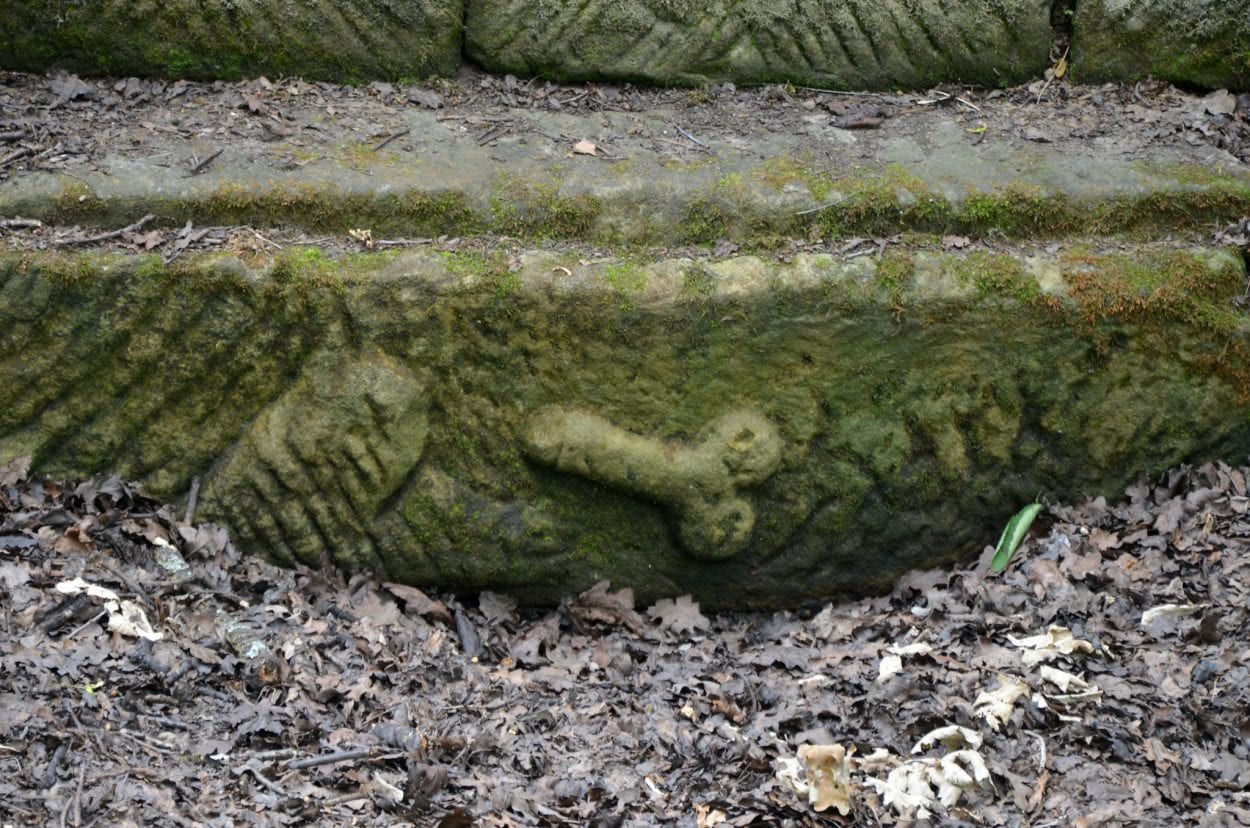Hadrian’s Wall is one of the most recognised landmarks from the legacy of Roman Britain, scaling the width of the province of Britannia over a length of 73 miles (116km) from Mais at the Solway Firth, to Segedunum at Wallsend in the North Sea.
The wall was constructed by the Legio VI Victrix, Legio XX Valeria Victrix, and the Legio II Augusta, supported by auxiliary units and the Classis Britannica (Roman Fleet).
Across the length of the wall corridor, and at military installations, 59 known etchings of male genitalia, otherwise known as a fascinus or fascinum were carved at various locations to symbolise the male phallus.
The Roman’s believed that the phallus was the embodiment of a masculine generative power, and was one of the tokens of the safety of the state (sacra Romana) that gave protection and good fortune.

Phallic imagery can be found across the Roman world in sculptures, mosaics, frescoes, and portable objects such as pendants or bulla, to ward off evil that may prey on children (in particular, young boys), or from the wandering evil eye (malus oculus) of men.
Concentrations of phalli along the Hadrian’s Wall corridor:
The 59 phalli along the wall corridor fall within the architectural definition of incised, relief, or sculpture (39 phalli being incised, 19 phalli a relief, and only one example being classified as a sculpture).
Each architectural type has been grouped into one of nine morphological traits, including; the rocket, the hammer, the kinky-winky, the splitcock, the pointer, the double-dong, running hard, the beast, and lucky dip (see Un-Roman Sex by Tatiana Ivleva, and Rob Collins).
The number of phalli carvings are primarily associated with active military sites and river crossings, such as: Condercum (1 phallus), Banna (3 phalli), Brocolitia (1 phallus), Cilurnum (4 phalli), Coria (8 phalli), Vercovicium (4 phalli), Arbeia (4 phalli), Vindolanda (12 phallus), Luguvalium (3 phalli), and Alauna (4 phalli).
Whilst phalli within the wall structure itself are less frequent, the section between Birdoswald Roman Fort (Banna) and Harrows Scar Milecastle has a concentration of phallic symbols and inscriptions, in addition to west of turret 49b that are visible on the south face of the stone curtain, pointing towards the direction of the fort with an erection.
Header Image Credit : Carole Raddato – CC BY-SA 2.0





